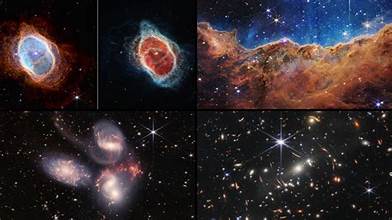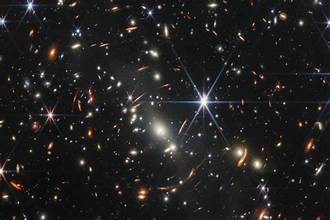
As we venture further into the 21st century, the realm of space exploration continues to captivate our imagination and expand our understanding of the universe. In 2024, the Hubble Space Telescope and the James Webb Space Telescope (JWST) stand at the forefront of astronomical discovery, providing groundbreaking insights into the cosmos. This article delves into the latest findings from these two iconic telescopes, showcasing their significant contributions to our knowledge of the universe.
The Legacy of the Hubble Space Telescope
Since its launch in 1990, the Hubble Space Telescope has revolutionized our view of the universe. Orbiting Earth at an altitude of approximately 547 kilometers (340 miles), Hubble has captured breathtaking images and provided invaluable data about distant galaxies, nebulae, and other cosmic phenomena. As we look at the latest discoveries from Hubble in 2024, it’s clear that this venerable instrument continues to play a crucial role in modern astronomy.
1. Revealing the Secrets of Dark Matter
One of the most intriguing aspects of contemporary cosmology is the study of dark matter. This elusive substance, which makes up about 27% of the universe’s mass-energy content, does not emit, absorb, or reflect light, making it incredibly difficult to detect. Recent observations from Hubble have enhanced our understanding of dark matter by mapping its distribution in various galaxy clusters. These maps have provided new insights into how dark matter influences galaxy formation and evolution.
2. Uncovering the Mysteries of Exoplanet Atmospheres
Hubble has also contributed significantly to the study of exoplanets—planets that orbit stars outside our solar system. In 2024, Hubble’s observations have been instrumental in analyzing the atmospheres of several exoplanets, revealing the presence of key molecules such as water vapor, methane, and carbon dioxide. These findings are crucial for assessing the habitability of these distant worlds and identifying potential candidates for future exploration.
3. Investigating Supermassive Black Holes
Supermassive black holes, which reside at the centers of most galaxies, are known for their immense gravitational pull. Hubble’s high-resolution imaging has provided new data on the formation and growth of these cosmic giants. Recent studies have used Hubble’s observations to explore the relationship between supermassive black holes and their host galaxies, shedding light on the processes that drive their growth and influence galactic evolution.
The James Webb Space Telescope: A New Era of Discovery
Launched in December 2021, the James Webb Space Telescope represents a new generation of space observatories. Positioned about 1.5 million kilometers (1 million miles) from Earth, JWST is designed to observe the universe in infrared wavelengths, allowing it to peer through cosmic dust and observe objects too faint for other telescopes. In 2024, JWST has already made several groundbreaking discoveries that are reshaping our understanding of the cosmos.
1. Peering into the Dawn of the Universe
One of JWST’s primary objectives is to observe the universe’s earliest galaxies, those formed shortly after the Big Bang. In 2024, JWST’s deep-field images have revealed a host of previously unknown galaxies, some of which formed just a few hundred million years after the universe’s inception. These observations are helping astronomers understand the conditions that led to the formation of the first galaxies and stars.
2. Exploring the Formation of Stars and Planetary Systems
JWST’s advanced infrared capabilities have provided unprecedented views of stellar nurseries—regions where new stars and planetary systems are born. Recent images from JWST have shown detailed structures within these dense clouds of gas and dust, offering insights into the processes that govern star formation and the birth of planetary systems. These observations are crucial for understanding the formation of our own solar system and others like it.
3. Analyzing the Atmospheres of Distant Exoplanets
JWST’s instruments are also designed to study the atmospheres of exoplanets in greater detail than ever before. In 2024, JWST has detected complex atmospheric features on several exoplanets, including the presence of potentially habitable conditions. These findings are enhancing our understanding of exoplanetary atmospheres and the potential for life beyond Earth.
The Synergy Between Hubble and JWST
The combination of Hubble’s optical and near-infrared observations with JWST’s advanced infrared capabilities provides a comprehensive view of the universe. While Hubble continues to offer high-resolution images and data in visible and ultraviolet light, JWST complements this by probing the infrared spectrum. Together, these telescopes provide a more complete picture of cosmic phenomena, from the earliest galaxies to the most distant exoplanets.
Implications for Future Research
The discoveries made by Hubble and JWST in 2024 have profound implications for future research in astronomy and astrophysics. By uncovering new details about dark matter, exoplanets, and the early universe, these telescopes are paving the way for new theories and investigations. As we continue to analyze their findings, we can expect to gain deeper insights into the fundamental processes that shape our universe.
Conclusion
In 2024, the Hubble Space Telescope and the James Webb Space Telescope are at the forefront of astronomical discovery, providing groundbreaking insights into the cosmos. Hubble’s continued exploration of dark matter, exoplanet atmospheres, and supermassive black holes, combined with JWST’s observations of the early universe, stellar formation, and exoplanetary atmospheres, underscore the importance of these observatories in advancing our understanding of the universe. As we continue to explore the cosmic frontier, the contributions of Hubble and JWST will remain essential in uncovering the mysteries of the cosmos and expanding our knowledge of the universe.

